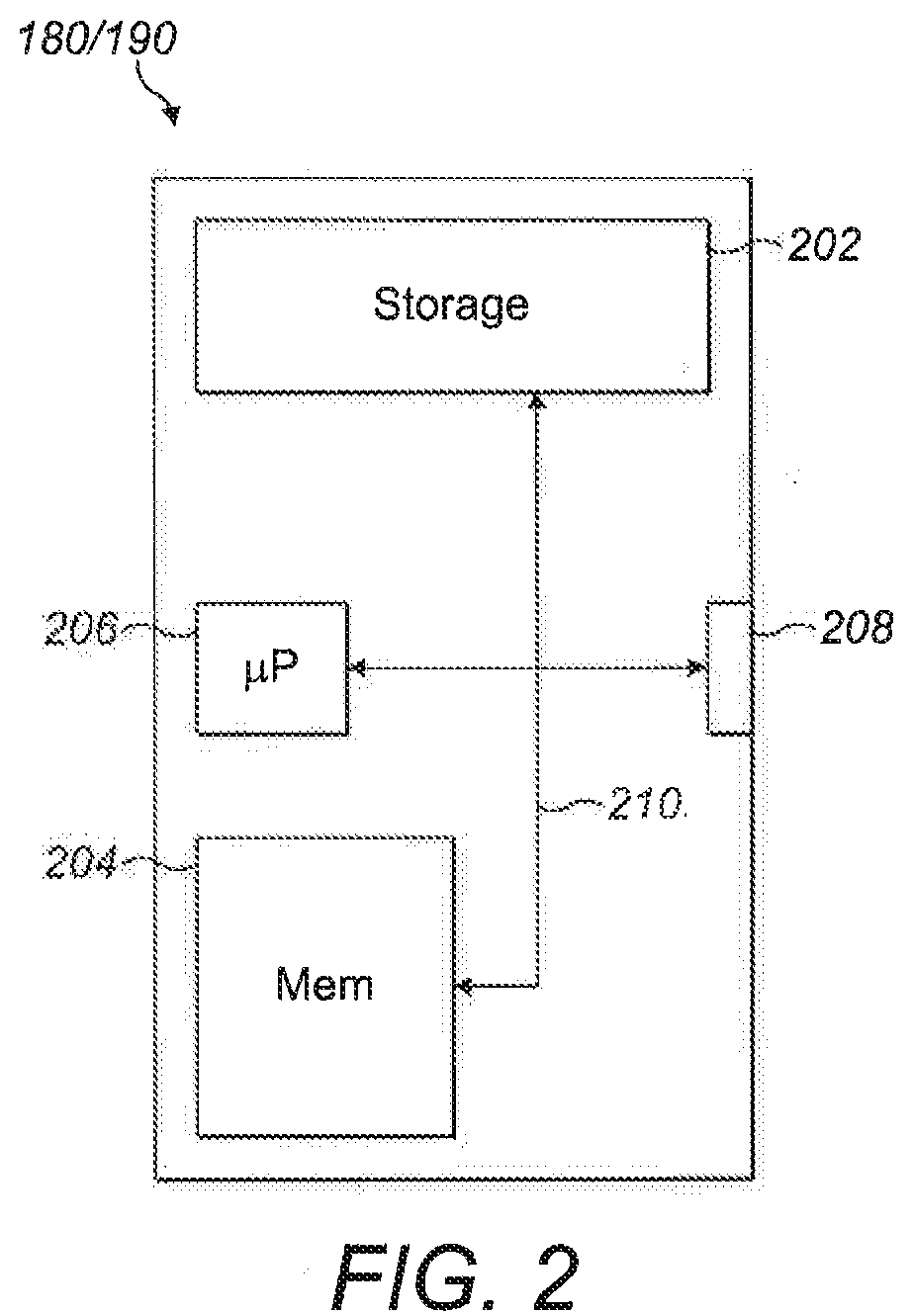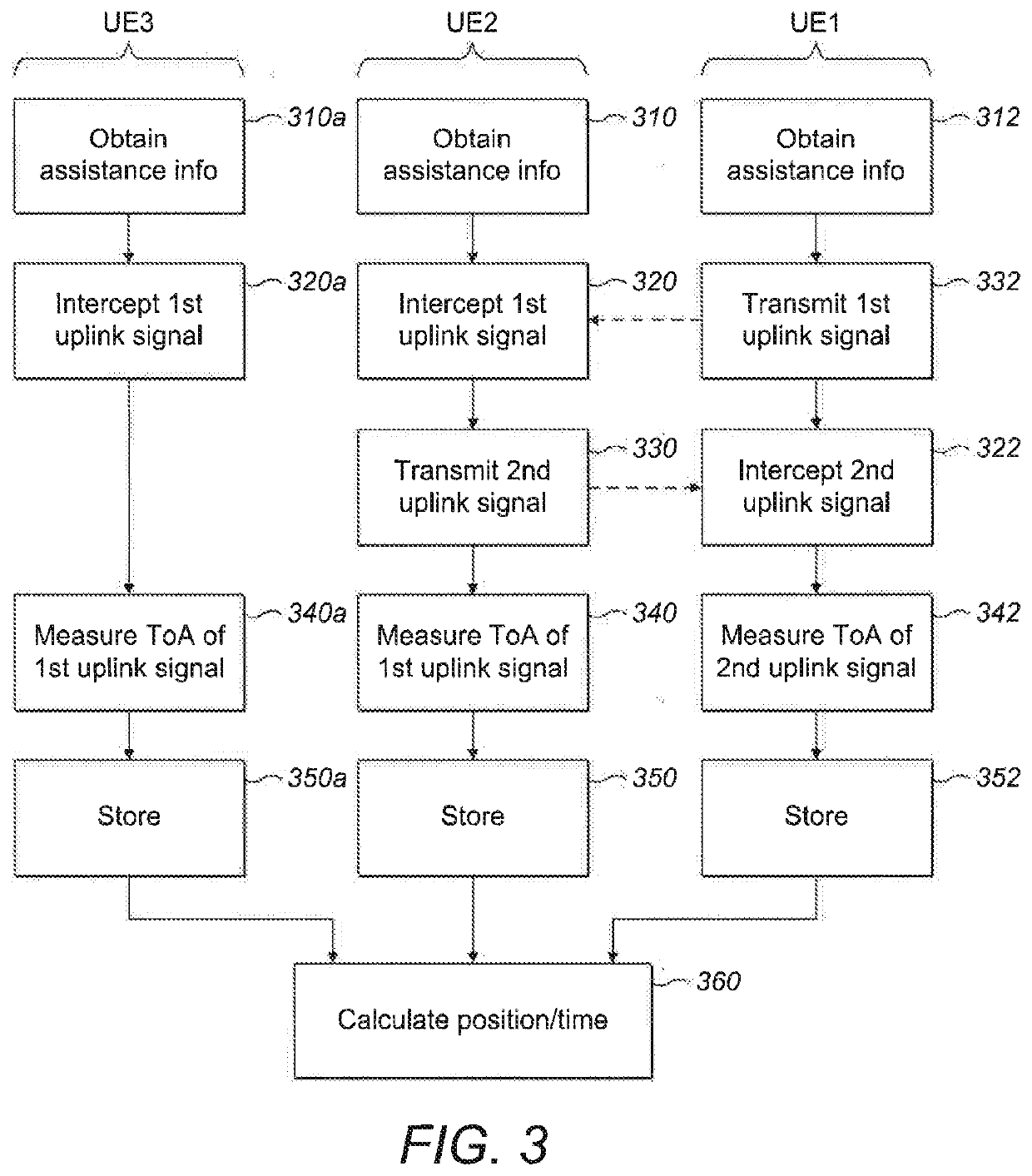Intercepting an uplink signal to assist in timing or positioning calculations
a technology of uplink signal and timing or positioning calculation, applied in the field of uplink signal, can solve the problems of weak reception, inability to be practical in some environments, and requiring the use of the ue to make measurements, and achieve the effect of facilitating trilateration and increasing geometrical diversity
- Summary
- Abstract
- Description
- Claims
- Application Information
AI Technical Summary
Benefits of technology
Problems solved by technology
Method used
Image
Examples
example 1
edules an Uplink Access Request
[0306]FIG. 12 shows a sequence of operations for scheduled measurement of a neighbour donor's access request. In this example, it is assumed that there is a supporting service 190 and a pool of participating neighbours. It might perhaps be the building application use-case, described above with reference to FIG. 7.
[0307]The listener (UE 110) is in communication with the supporting service 190, via the cellular network and its base station 170 (which might not necessarily be the same base station as the BS 172 serving the donor modem), or by some other means. The listener requests a position, and the supporting service then arranges that the neighbouring donor modems will make transmissions at a schedule of times in the future. A number of donor transmissions may be scheduled, to serve the needs and requests of a number of listeners.
[0308]The uplink signal in this case is an access request (RACH). It is arranged with the donor that this will take place ...
example 2
ink Data Reference Signal Measured
[0311]FIG. 13 shows a sequence of operations for a measurement using the uplink demodulation reference signal. In this example, we use a signal which has better properties for making accurate measurements, the demodulation reference signal (DMRS). This is part of the uplink data signal message, and so is visible when the neighbouring donor modem is in connected mode, transmitting uplink data. The channel allocations for the uplink are determined by the network, and are reported to all users in the Downlink Control Information block. Each connected modem extracts its uplink allocation from this information, with the individual allocations identifiable according to the Cell Radio Network Temporary Identifier (C-RNTI) provided to the modem when it connects to the network for a session.
[0312]In this case, following a request for a position, the supporting service 190 connects to the neighbouring donor (UE 112), establishing a connection by the donor to ...
PUM
 Login to View More
Login to View More Abstract
Description
Claims
Application Information
 Login to View More
Login to View More - R&D
- Intellectual Property
- Life Sciences
- Materials
- Tech Scout
- Unparalleled Data Quality
- Higher Quality Content
- 60% Fewer Hallucinations
Browse by: Latest US Patents, China's latest patents, Technical Efficacy Thesaurus, Application Domain, Technology Topic, Popular Technical Reports.
© 2025 PatSnap. All rights reserved.Legal|Privacy policy|Modern Slavery Act Transparency Statement|Sitemap|About US| Contact US: help@patsnap.com



